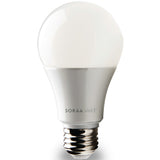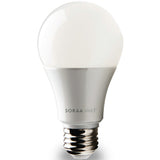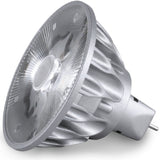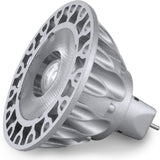Retail Stores Face a Challenging Question: Is Now the Time to Switch to LED Lighting?
Posted by Dave on for ProLampSales
Effective lighting for retail stores focuses on two concepts: entice shoppers to enter the store and, once they are in the store, direct their attention to the merchandise.
This basic formula gets more complex, depending on the store, with the need to find a balance with other important issues such as energy use, maintenance costs, heat and UV generated by the lighting.
A winning lighting strategy accomplishes the primary goal of getting shoppers in the door and buying merchandise while supporting the bottom line with well managed utility and maintenance costs. The best examples of effective retail store lighting accomplish all of these goals without drawing attention to the lighting system itself.
Importantly, the implementation of a retail lighting strategy varies considerably with the both the physical size of the retail store, the type of products being sold and the desired shopping environment owners want to convey to their customers.
While the basic lighting concepts remain the same, the actual lighting installations in big box retail such as Walmart, Home Depot and other similar large stores will obviously be very different from that for Saks and Macy's which will also vary from small boutiques.
The Gorilla in the Room: LED
In the last few years, another major variable has entered the lighting decision-making process — is it time to switch to LED lighting? Whether the project is simply lamp replacement or a fixture retrofit, the option to change the light source from halogen, linear fluorescent, compact fluorescent or HID to LED can have significant impact on the bottom line.
Because of dramatically reduced energy and maintenance costs, lighting decisions for any retail environment now need to include consideration of LED lamps and fixtures — at the very least for the purpose of starting to compare the trade-offs. The significant operational savings potential of LED must be balanced against the higher initial costs of product and, in some cases, higher cost of installation.
Example: Halogen PAR vs. LED PAR
Halogen directional lighting is very common in retail settings. In the last few years the efficiency of halogen has improved by 10% - 20%. A traditional 75W PAR30 halogen is now available as 60W with similar lighting performance. A definite improvement, but no match for the 13W LED PAR30 equivalent to 75W halogen.
Another difference is rated life. Halogen bulbs average around 2,000 hours compared to 25,000 hours for LED. Add lower maintenance costs to reduced energy bills.
The case for LED is only weakened by the difference in the initial cost for replacement bulbs: $12 to $15 for 75W equivalent halogen compared to $20 to $25 for commercial grade LED.
If the lowest initial cost drives the decision, traditional light sources will usually be the choice whether for lamp replacements or retrofit projects. However, the higher cost of LEDs will often be returned within a couple of years by the reduced cost of operation and maintenance. The long term benefits must be weighed against the availability of capital to make the initial investment.
Example: Fluorescent T8 vs. LED T8
For linear fluorescent lighting replacements, the comparison with LED tubes is more complicated. T8 fluorescent lamp / ballast systems can have a rated life as high as 40,000 hours, in the same range as LED. A 32W T8 fluorescent can be replaced by an 18W to 22W LED, certainly an advantage, but only significant if there are many fluorescent fixtures in the store.
Unlike directional lighting, LED linear tubes must compensate for the inherently “directional” nature of LED diodes. While the light levels and color characteristic of LED T8 lamps compare favorably with fluorescent, the light distribution may be somewhat different. When considering LED as a replacement for linear fluorescent in retail stores, it's important to compare the photometric reports and install LED samples adjacent to fluorescent so you can evaluate the impact of any light distribution differences.
In addition, there are choices to be made with LED lamp types. Some LED T8 replacements are driven by the existing fluorescent electronic ballast so the installation simply means substituting and LED lamp for the fluorescent. Another LED T8 option, usually with slightly higher efficiency, requires bypassing / removing the existing ballast and rewiring the line voltage to run directly to the LED lamp which utilizes an internal driver. Depending on the choice, additional installation costs may result.
All of this does not mean LED replacements for T8 fluorescent should not be considered for retail stores. It only means the decision should involve careful consideration of these variables.
Example: High Bay Metal Halide vs. High Bay LED
Big box retail often utilizes high bay fixtures, commonly with high wattage metal halide lamps. LED replacements for metal halide either simply replace the metal halide bulbs with LED bulbs that operate off the HID ballast, or, require bypassing the ballast with re-wiring for line voltage.
A 250W metal halide lamp can be replaced by an 80W LED lamp to provide some real savings. The replacement lamp cost ranges from $20 to $30 for a pulse start 250W metal halide compared to $200 or so for the LED equivalent. A big up front expense that can only be justified by calculating a return on investment.
It's worth noting that an additional advantage for LED replacements of HID high bay lamps is improved color quality of the light. LED usually provides a color rendering index 80 or above while metal halide most often has a CRI of 70. Improved color quality of light may or may not be important for the store, but this factor and others, like the fact that LED emits no UV radiation, can add up and help justify the higher up front costs.
LED Will Soon Dominate the Market for Commercial Lighting
In 2016, many manufacturers are on 4th or even 5th generation LED products. Each generation brings better performance and lower costs. Today, most lighting specialists will say that LED lamps and fixtures have reached a point where the key lighting metrics can match or exceed those of traditional light sources. The prevailing view of most industry analysts is that LED will dominate the commercial and institutiona lighting market within a few years.
It makes sense today for retail store owners and managers to at least include the LED option when evaluating either lamp replacements or lighting retrofit projects.
- Posted in LED, Retail Stores
Featured Products (View All)
0 Comments




